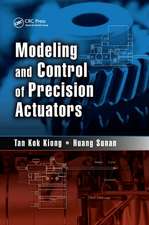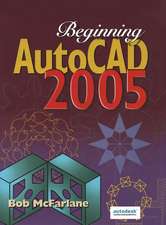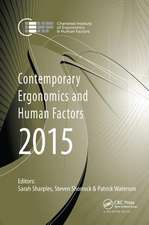Introduction to Approximate Solution Techniques, Numerical Modeling, and Finite Element Methods: Civil and Environmental Engineering
Autor Victor N. Kaliakinen Limba Engleză Hardback – 25 sep 2001
This reference/text focuses on classical approximate solution techniques such as the finite difference method, the method of weighted residuals, and variation methods, culminating in an introduction to the finite element method (FEM).
Discusses the general notion of approximate solutions and associated errors!
With 1500 equations and more than 750 references, drawings, and tables, Introduction to Approximate Solution Techniques, Numerical Modeling, and Finite Element Methods:
Containing appendices that present concise overviews of topics and serve as rudimentary tutorials for professionals and students without a background in computational mechanics, Introduction to Approximate Solution Techniques, Numerical Modeling, and Finite Element Methods is a blue-chip reference for civil, mechanical, structural, aerospace, and industrial engineers, and a practical text for upper-level undergraduate and graduate students studying approximate solution techniques and the FEM.
Preț: 1349.08 lei
Preț vechi: 1645.22 lei
-18% Nou
Puncte Express: 2024
Preț estimativ în valută:
258.16€ • 276.05$ • 215.24£
258.16€ • 276.05$ • 215.24£
Carte tipărită la comandă
Livrare economică 17 aprilie-01 mai
Preluare comenzi: 021 569.72.76
Specificații
ISBN-13: 9780824706791
ISBN-10: 082470679X
Pagini: 664
Ilustrații: illustrations
Dimensiuni: 156 x 234 x 37 mm
Greutate: 1.09 kg
Ediția:1
Editura: CRC Press
Colecția CRC Press
Seria Civil and Environmental Engineering
ISBN-10: 082470679X
Pagini: 664
Ilustrații: illustrations
Dimensiuni: 156 x 234 x 37 mm
Greutate: 1.09 kg
Ediția:1
Editura: CRC Press
Colecția CRC Press
Seria Civil and Environmental Engineering
Public țintă
UndergraduateCuprins
Governing equations and their approximate solution; computer storage and manipulation of numbers; the finite difference method; the method of weighted residuals; variational methods; introduction to the finite element method; development of finite element equations; steps in performing finite element analysis; element interpolation functions; element mapping; finite element analysis of scalar field problems; finite element analysis in linear elastostatics; implementation, modelling, and related issues. Appendices: mathematical potpourri; matrices and linear algebra; some notes on heat flow; local and natural coordinate systems; the patch test; solution of linear systems of equations; notes on integration of finite elements.
Descriere
This book focuses on classical approximate solution techniques such as the finite difference method, the method of weighted residuals, and variation methods, culminating in an introduction to the finite element method (FEM). It describes the approximate solution of ordinary and partial differential equations using the finite difference method, covers the method of weighted residuals, including specific weighting and trial functions, considers variational methods, highlights all aspects associated with the formulation of finite element equations, and outlines meshing of the solution domain, nodal specifications, solution of global equations, solution refinement, and assessment of results.















